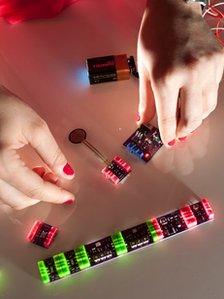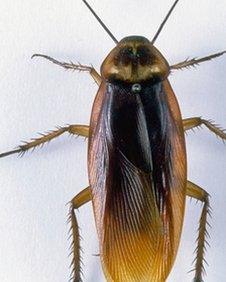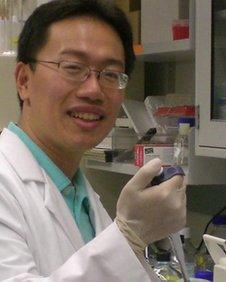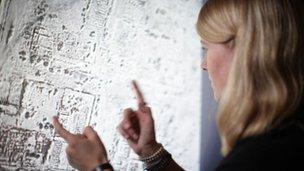TED 2012: For they are jolly good fellows
- Published

TED talks have attracted a reputation for bringing together innovative thinkers from around the world
It'sTED, externaltime again, when the great and the good from fields as diverse as art, architecture, biology and physics come together to "spread good ideas".
Each year the conference bestows fellowships on 25 "extraordinary innovators".
It is seeking young, creative new members for the TED community, and hopes that its programme will help, in the words of fellowship director Tom Rielly, "slingshot them farther and faster in their careers".
This year the programme had 1,200 applicants.
As TED 2012 opens it doors in Long Beach, the BBC has been speaking to a handful of those hoping to use technology to help change the world.
AYAH BDEIR - ENGINEER AND ARTIST

Ms Bdeir is a Lebanese inventor who wants to encourage the iPad generation to play around with electronics in the same way that their parents played with Lego.
She has taken her inspiration from the humble concrete brick, which she describes as the world's first building block. Add to that the 21st Century's building block - the transistor - and the simple way that Lego works, and she hopes to hit on a great new toy.
Littlebits is basically a kit of circuits that snap together with magnets.
Each are colour-coded and have different functionality including light, sound and movement.
Ms Bdeir has given the kits to children and others with no experience of electronics who in turn have created amazing experiments, including a playdough lobster that is afraid of the dark.
They are also learning about complex processes.
"They start to understand how an elevator works or how the iPad responds to touch," she said.
The kits are open-source and design ideas can be downloaded for free.
The aim is to "encourage a world of inventors".
"I don't accept that the transistor, the building block of our time, is for experts only," Ms Bdeir said.
GREGORY GAGE - DIY NEUROSCIENTIST

A cockroach could inspire children to learn neuroscience
TED 2012 is probably the first conference ever to feature the creation of a robotic cockroach live on stage.
As well as fulfilling the TED audience's appetite for all things weird and wonderful, the experiment had a more serious aim.
Mr Gage wants to show how neuroscience can be simplified and brought to schoolchildren, both cheaply and demonstrably, to inspire them to learn about the brain.
The cockroach was anaesthetised in a glass of ice-cold water (animal cruelty is not tolerated at TED) and its leg cut off with a pair of scissors (it will grow back apparently).
The leg was hooked up to sensors which demonstrated how neurons in the leg were still able to communicate with the brain. A map showed the patterns of the brain and the sound of it, both of which could be manipulated by touching the leg.
The aim is to create a "neuro-revolution".
"How excited would you be by this?" Mr Gage asked the audience.
Very, the TEDsters seemed to suggest as they gave him a standing ovation.
JIMMY LIN - COMPUTATIONAL GENETICIST

Mr Lin wants to make it easier for patients with rare diseases to find cures
One of the greatest resources of the internet is its ability to harness the power of the crowd.
The latest buzzword is "crowdfunding", coming up with an idea and turning it over to the web community to see if they are willing to finance it.
Mr Lin wants to use crowdfunding for a very niche and currently underfunded area of medical research - rare diseases.
It is estimated that 250 million people in the world suffer from a rare disease - defined in the US as a condition which affects fewer than 200,000 patients.
Many are what Mr Lin describes as medical "orphans" wandering from hospital to hospital in search of someone who is able to throw light on their condition.
Mr Lin's day job as a genome sequencer at the University of Washington inspired him to createraregenomics.org, external, a website aimed at giving patients with these diseases access to experts in the field, and to offer them a chance to crowdfund research into their conditions.
The website is in its infancy and currently supports just 30 patients, but Mr Lin hopes that will grow to 1,000 in five years.
"Once we solve the problems of one family, that makes it easier for future patients," he said.
SARAH PARCAK - SPACE ARCHEOLOGIST

Sarah Parcak is on the verge of discovering a lost city
Ms Parcak has been described as the Indiana Jones of satellite imaging, largely because she is using such technology to search for a lost city.
The city is Itj-tawy, and is believed to have been ancient Egypt's capital 4,000 years ago.
Ms Parcak has always had a passion for finding things, beginning as a child with shells on the beaches of her native Maine, in the north-eastern US.
When she became an archaeologist, she realised that the naked eye alone was not going to be able to find all the mysteries hiding beneath the sands of Egypt.
Using topographical data from Nasa and satellite imaging, which can spot chemical changes in the landscape left by ancient builders, Ms Parcak has identified a possible site for Itj-tawy.
Initial excavations have proved promising, revealing layers of pottery and jewellery which suggest it may well be the lost city.
The eventual aim is to train young Egyptians to use the satellite technology so that they can carry on discovering the riches beneath their land.